Old Spanish Trail Zero Milestone
Introduction
Text-to-speech Audio
Images
The coquina sphere marks the Old Spanish Trail Zero Milestone located in St. Augustine, Florida.
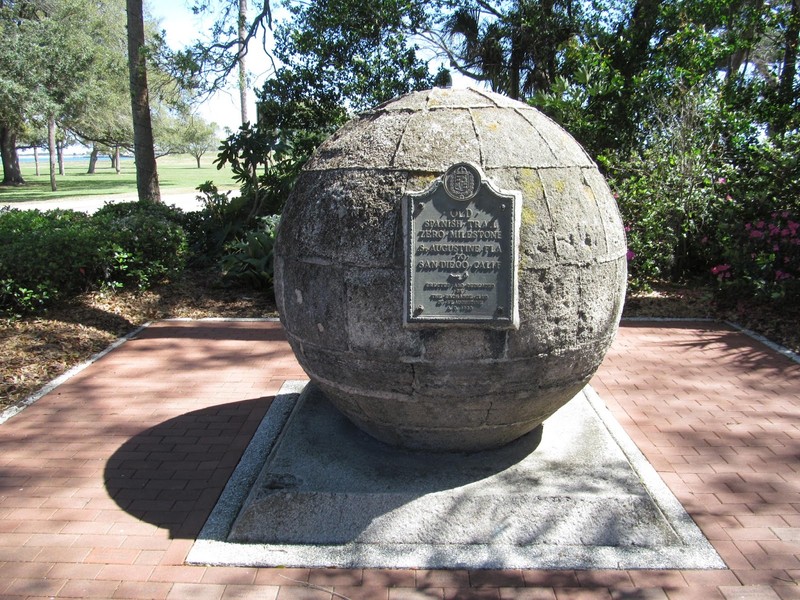
The plaque located on The Old Spanish Trail Zero Milestone located in St. Augustine, Florida.
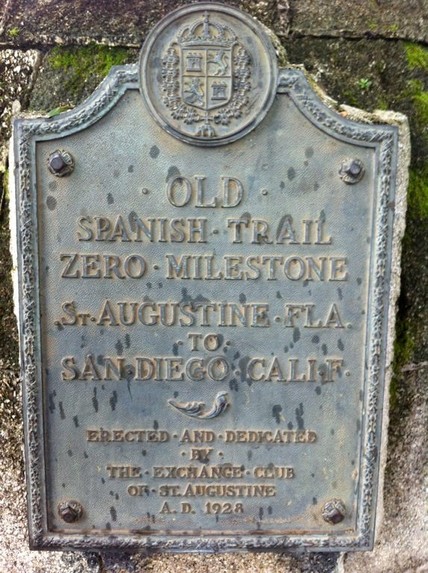
Page 1, Old Spanish Trail Travelog: Louisiana Edition. 1925. Credit: Old Spanish Trail Centennial
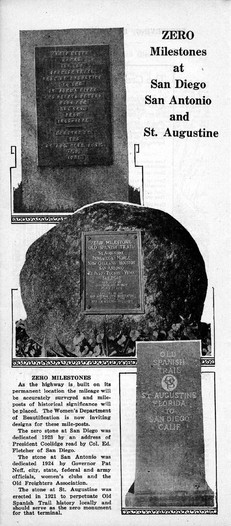
Old Spanish Trail strip map. Credit: Texas Transportation Museum
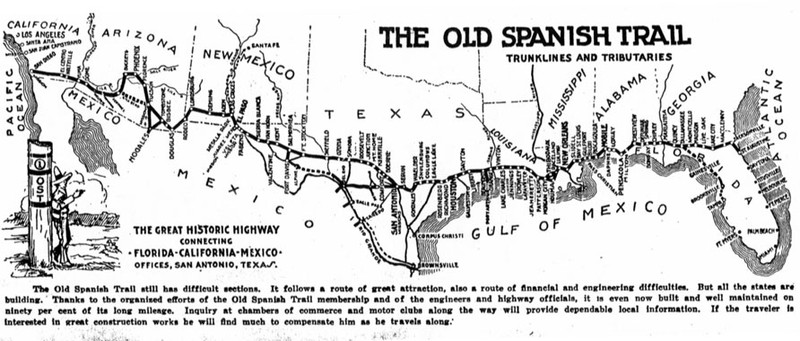
Back cover, Old Spanish Trail Travelog: Louisiana Edition. Credit: Old Spanish Trail Centennial
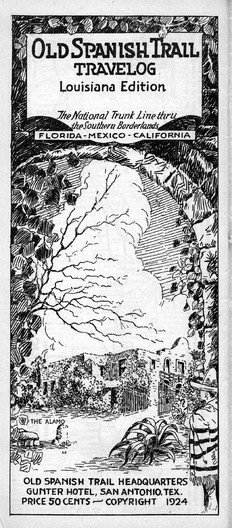
"The Creed of the Trail" was the first page of the first issue of the Old Spanish Trail magazine. 1920, Old Spanish Trail Association. Credit: St. Mary's University

Old Spanish Trail street sign located in Florida. Credit: drivetheost, Flickr
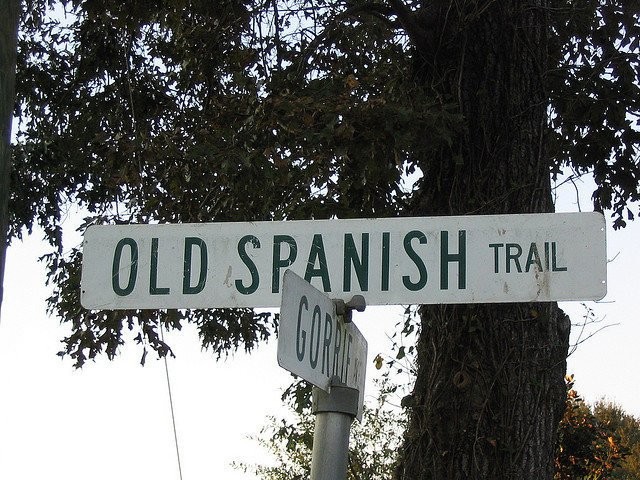
Backstory and Context
Text-to-speech Audio
The Old Spanish Trail (OST) was an early 20th-century highway project intended to provide a continuous road route from California to Florida, linking together the southwestern and southern states. The trail is one of the first interstate roads in the United States.
Planning and construction of the OST highway system began in 1915 and the highway was officially opened for travel more than a decade later in 1929. The OST highway follows what eventually became known as U.S. Highway 80 in the southwest and U.S. Highway 90 in the south.
The OST was originally developed as a touring route for automobiles through Florida, Alabama, Mississippi, Louisiana, Texas, New Mexico, Arizona, and California. The original route is now the location of several parts of current highways including US 80, US 90 and US 290. These roads were later replaced by the interstate system and a significant part of the Old Spanish Trail can now be travelled by taking I-8 and I-10.
Sources
The Old Spanish Trail: Building the Shortest Highway in the Longest Amount of Time. Drive the OST. . Accessed November 05, 2018. http://www.drivetheost.com/history.html.
Old Spanish Trail Zero Milestone. Atlas Obscura. . Accessed November 05, 2018. https://www.atlasobscura.com/places/old-spanish-trail-zero-milestone.
Parker, Susan R.. Susan Parker: Dixie Highway, Old Spanish Highway sparked tourism for Ancient City. The St. Augustine Record. October 18, 2015. Accessed November 09, 2018. http://www.staugustine.com/article/20151018/NEWS/310189925.
